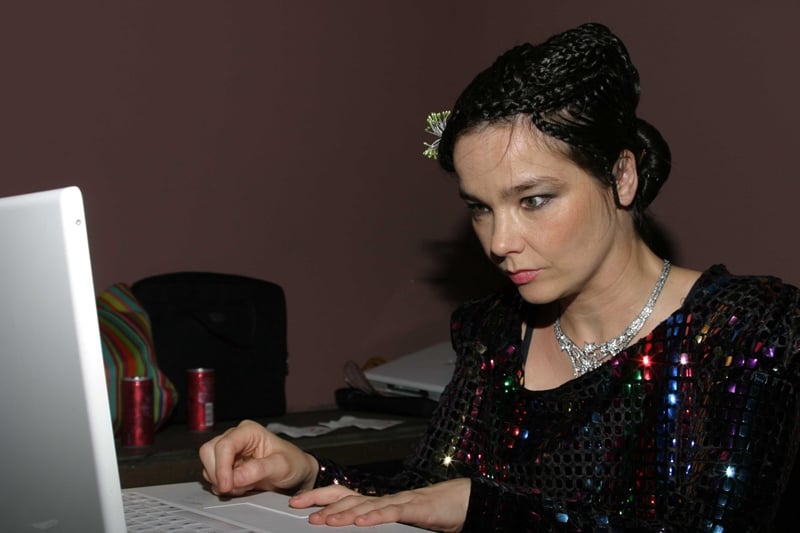

Scattered about the rooms were other bits of paraphernalia relating to Björk’s recorded catalogue, as well as pages from notebooks that offer revelations like: Björk changed a line in the song “Thunderbolt” from “The wind blows around my face” to “The wind stern on my face.” Also: Björk’s handwriting is not great. The narrator in my special iPhone came back on and said, “The flickering fire that had inspired the songwriters had been replaced by the moving image of the home screen.” She said this without a trace of irony. So, O.K., that’s not nothing, but I really can’t stress enough how much my “sophisticated Björk audio guide software” is just a regular old museum audio guide.Īnd now here I was standing next to a life-size mannequin of Björk in her famous swan dress from the Academy Awards ceremony in 2001. When I left the room, the sound cut off and switched automatically to a different track–this one dedicated to the album Vespertine–and I realized that my special iPhone knew where I was in the exhibition.
Bjork debut moma full#
The woman narrator returned to tell me about “the girl” finding herself on a “circular path of hard cement…and then the electric lights came on.”Īs I went into another room, this one focusing on Homogenic, the narrator said, “A song could be sung by a coconut with purple fur,” and I looked at the kissing robots from the video for “All Is Full of Love.” “She herself became a tree that grew love on every branch,” the narrator continued. I saw Björk’s red shoes from the “Hyperballad” music video. “Look around,” a man’s voice said as I entered the next room, dedicated to Björk’s 1995 album Post.

“Once there was a heart, a human heart that lived inside a girl,” the narrator told me. A woman narrator began speaking while I was standing in a room with a two-foot-tall statue of Björk, posing as she appears on her debut album in a mohair sweater, clasping her hands over her mouth in a gesture that is both solemn and sentimental. This section of the show is called “Songlines.” A voice came through my headphones telling me, “Make sure you pause for thought.” Doing so, I thought the sound was a little low on my headphones, but I couldn’t find a way to turn it up. This particular queue had all the enthusiasm of a breadline and its purpose was to retrieve a Volkswagen-sponsored “augmented audio guide.” In various press releases, much has been made of this “innovative technology,” which “creates a 3D listening experience by building on the combination of signal processing, location-based trigger points, and movements of each individual visitor to create a customizable experience for each visitor of the exhibit.” It turned out to be basically an iPhone with a pair of headphones plugged in. There were 14 flatscreen televisions broadcasting various Björk performances–at an MTV Unplugged taping, at a concert where she played the album Homogenic in its entirety–and a lot of emotionless faces belonging to people working for publications for the most part under-represented at other MoMA press previews.

I love drama.” We were corralled in a tight hallway. One gloomy morning this week at the Museum of Modern Art in New York, I was standing in a snaking, claustrophobic line–the first of many–for the press preview of a retrospective of the Icelandic singer Björk, when a woman with a heavy German accent said humorlessly and without the slightest hint of excitement, “This is drama.


 0 kommentar(er)
0 kommentar(er)
